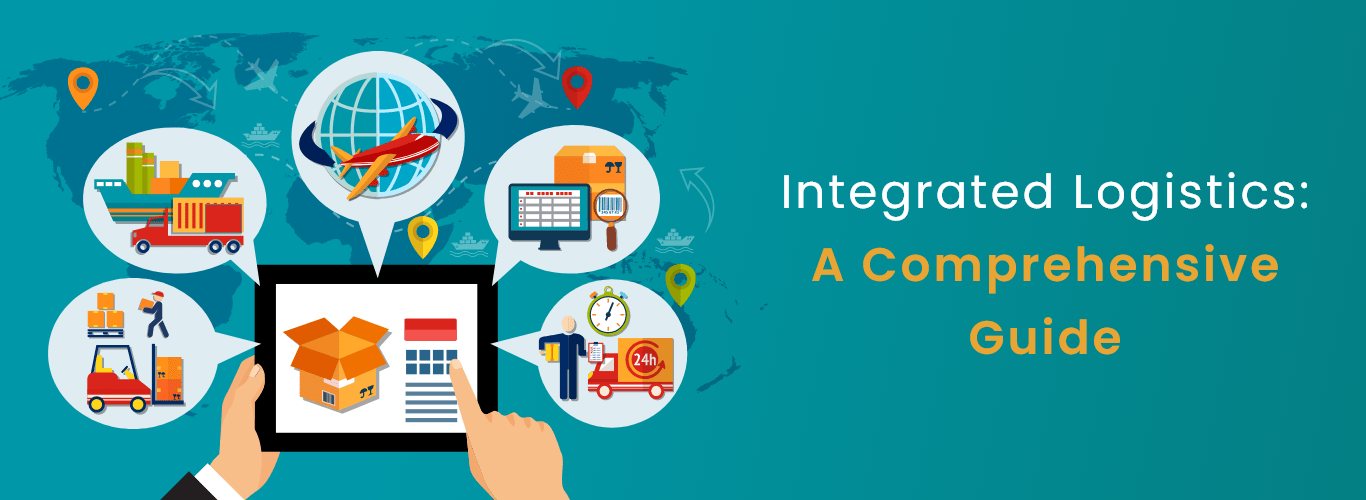Lorem ipsum dolor sit amet, consectetuer adipiscing elit, sed diam nonummy nibh euismod tincidunt ut laoreet dolore magna aliquam erat volutpat.

Integrated logistics is a comprehensive approach to managing the flow of goods, information, and other resources throughout the supply chain. It involves the coordination and integration of various activities, such as procurement, transportation, warehousing, inventory management, and customer service, to optimise the supply chain and maximise efficiency and profitability.Integrated logistics is a strategic approach to managing the movement of goods and information through the supply chain in a coordinated and efficient manner. It involves the integration of various logistics functions, including procurement, transportation, warehousing, inventory management, and customer service, to ensure that goods are delivered to customers in a timely, cost-effective, and reliable manner. By optimising the supply chain, integrated logistics can help organisations reduce costs, improve customer satisfaction, and gain a competitive advantage in the marketplace.
In this guide, we will provide an overview of integrated logistics and its key components.
It is the process of acquiring goods and services from suppliers, which can involve various activities such as identifying suppliers, negotiating contracts, placing orders, and managing supplier relationships. The goal of procurement is to obtain the right products or services at the right price, quality, and time to meet the needs of the organisation.
The movement of goods from one location to another, including shipping, trucking, and air or rail transport. Effective transportation management is critical for ensuring that products are delivered on time and in good condition, as well as for minimising transportation costs and optimising transportation routes.
Transportation activities can include planning and scheduling shipments, selecting carriers, tracking shipments, managing transportation documentation, and coordinating with other supply chain functions such as procurement, warehousing, and customer service.
The storage and management of goods in a warehouse or distribution center.Inventory management: The monitoring and control of inventory levels to ensure that products are available when needed and to minimise excess inventory.
The support provided to customers, including order fulfilment, returns, and customer inquiries. Effective customer service practices are critical for ensuring customer satisfaction and loyalty. Customer service activities can include receiving and processing customer orders, coordinating with other supply chain functions such as procurement, transportation, and warehousing to ensure timely and accurate order fulfilment, managing customer returns and exchanges, and providing support to customers through various channels such as phone, email, chat, or social media.
To achieve integrated logistics, companies must integrate these components and ensure that they are working together seamlessly. This requires a coordinated approach to planning, execution, and monitoring of supply chain activities.
Integrated logistics refers to the coordinated management of all the activities involved in the supply chain, including procurement, transportation, storage, and distribution. By integrating these activities, businesses can eliminate redundancies and inefficiencies, resulting in a streamlined and more cost-effective supply chain.
Integrated logistics allows companies to respond quickly to changes in demand or supply chain disruptions. It refers to the coordinated management of all the activities involved in the supply chain, including procurement, transportation, storage, and distribution. By integrating these activities, businesses can eliminate redundancies and inefficiencies, resulting in a streamlined and more cost-effective supply chain.
By optimising supply chain activities, companies can improve order fulfilment times and reduce errors, leading to better customer satisfaction. When companies streamline their supply chain processes, they can more effectively manage inventory levels, reduce order processing times, and ensure that products are delivered to customers in a timely and efficient manner. This can result in faster delivery times, fewer errors, and a higher level of customer satisfaction.
Integrated logistics can help companies optimize inventory levels, reducing the costs of holding excess inventory. With better inventory management, companies can reduce the costs associated with excess inventory, such as warehousing, storage, and insurance. This can also help them avoid stockouts and backorders, which can result in lost sales and dissatisfied customers.
With the aid of the integration function, The Logix Platform which consists of all the LMS and WMS components gives you better expertise. Integrated logistics is a complex process that involves the integration of various logistics activities to create a seamless flow of goods and services from the point of origin to the point of consumption. By optimising transportation, warehousing, inventory management, information management, technology, collaboration, and performance metrics, an effective integrated logistics system can reduce costs, increase efficiency, and improve customer satisfaction.